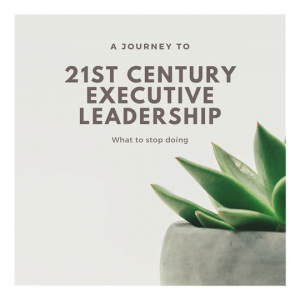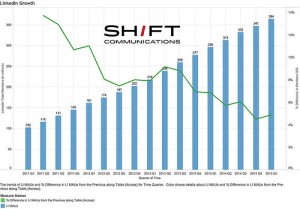
Fluent thinking is easy thinking. Disfluent thinking is thinking you have to work a little harder to make sense of or understand. What does this have to do with employee idea programs? Quite a lot, actually. It can have a big impact on the quality of the ideas that get submitted and how those ideas get evaluated.
Adam Alter is an Assistant Professor of Marketing at Stern School of Business, NYU. He is the author of Drunk Tank Pink: And Other Unexpected Forces that Shape How We Think, Feel, and Behave. One of the things he’s studying is the impact of fluency or disfluency has on making decisions. Here’s a link to a conversation with Adam that goes much deeper into the impacts of fluent vs. disfluent thinking.
How fluent thinking affects us
If something feels fluent or familiar to you, you assume you understand it really well. However, that can be a trap. There’s a risk of confirmation bias or of not fully considering the information you’re receiving and jumping to a conclusion too quickly. Adam explains through this example:
There’s a phenomenon known as the illusion of explanatory depth, and the idea is that there are certain things that we assume we understand much better than we do. If you ask someone how well can they can explain how a bicycle works on a scale of one to ten, people will between an eight and a ten out of ten. We’ve ridden bicycles, and we have a basic sense of what the components of a bicycle are. There are a couple of wheels, pedals, handlebars… But then if you press them, and say, “Okay. What can you tell me about how a bicycle works?” It turns out that they quickly realize that they’re not actually sure how the bicycle works. They know to a point. They know about these different components, but not really how they interact. That happens with a whole lot of processes.
How fluent thinking can undermine an employee idea program
When presented with an idea, the tendency is to make a quick judgment about whether we like the idea or not. But as explained above, this is a potential trap.
When we talk to customers that have been using idea management programs for a while, we often hear that one of their wishes is that those responsible for evaluating ideas would take more time to really think through and fully evaluate an idea. The bias for the evaluator is that they know some basics about the issue and potential solution and so are over-confident on their assessment of the idea’s value.
Here’s an example. One customer had received a few disconnected ideas about access to certain online tools, tools that didn’t work properly, and login issues. The initial reaction was “I know what this looks like. These are IT issues and so should be handled by IT as a trouble ticket.” However, in this instance, the evaluator took the time to think a little more deeply about several disconnected ideas to consider whether there was another root cause. This thinking led to a realization that for many users, the tools and where they could be accessed from was confusing. The issue wasn’t an IT problem, but a training problem. These ideas resulted in a new training program that improved productivity for many people and reduced time wasted with the service desk.
An important part of creating a successful idea management program is to train those in the organization who will be evaluating and implementing ideas to be aware of their biases and giving them tools to overcome this.
How can you overcome fluent thinking?
These are two tactics for dealing with fluent thinking on the part of evaluators.
One way is to present the idea in a disfluent way. By presenting the information in a somewhat surprising way, it gives us pause to spend a bit more time thinking about the idea. Research has shown, for example, that asking people to imagine what it would feel like to be healthier and fitter in a harder to read font got them to think about it in more detail. Those people were later more likely to agree to make a commitment to getting healthy and fit. Translating this to an idea program: ideas that are emailed are easier to make a snap judgment on, than ideas that contain visual information about the ideas, votes and comments associated with it.
A second way is to work through more data. We’re hardwired to make lazy, quick decisions when we can. This is an important benefit because decision fatigue builds up over the day. However, where more a more cognitive approach has benefit, committing to going through more details and data gets us away from fluent thinking.
There’s an example in the book “Better Smarter Faster” of teachers who were required to sit down and manually go through the data of each student in their class once a week. They were asked to produce reports on how students were doing, areas for improvement etc. Software based dashboards had been provided to each teacher to automatically produce these reports, but they weren’t being used effectively. The tendency was to look at the chart and then draw on their experience and make a quick decision about each student. It wasn’t until they started manually building the reports themselves that patterns they hadn’t seen before emerged. Students in this class are struggling with fractions, while those in this other class are doing slightly better. What can we learn from this? It was the mental effort that went into producing the reports that resulted in insights. The end result was that this particular school started to excel. It went from being one of the worst performers to a top performer and became a case study in the United States for their approach.
It was also this approach of looking at data that lead to the insight our customer had about improving end user training on tools their employees used. The leader at that organization was combing through the data of the many ideas submitted in order to produce a report on how the program was performing. Looking more closely at the data lead to the recognition of a pattern that would otherwise have been missed.
How disfluent thinking affects us
As mentioned, disfluency leads you to think more deeply and work through the information more comprehensively. The other thing it does, is that it allows you to depart more from the reality you know now.
How disfluent thinking can give you better ideas
Another cognitive bias we all have is that of anchoring, where we have the tendency to rely too heavily on the first piece of information offered. When it comes to brainstorming, this can be a big challenge. People have a hard time moving past the first idea and all ideas that follow are only variations of the first idea. However, if you force people to think more deeply about the question and create some disfluency first, it can break people away from what they know now and imagine new possibilities more easily.
An example to illustrate comes from an experiment focused on our ability to free associate. Subjects were asked to say the first word that came to mind when after a researcher said “blue”. The answers were “sky”, “ocean” etc. However, if they were presented with information that was clearly wrong before the free association exercise, they were more likely to come up with more creative associations like “jazz”.
If you want people to draw from a broader set of associations and possibilities to come up with better ideas, introduce some disfluency to get them to think more deeply about the question. As we’ve mentioned in much of our other content, asking the right questions has a big impact on the quantity and quality of ideas you receive.
How to create disfluency when soliciting ideas
It’s similar to the approaches above to overcome fluency.
Start with something that’s surprising. Recall that fluency comes from making a quick association with something that seems familiar. A name or word that’s different or hard to pronounce causes us to pause and consider the information that follows more closely. So start with a story or information that is surprising and gets people in a more contemplative state. Then follow with the question. For more on framing questions, have a look at this Goal Setting Guide.
The other approach is to present more information and data and force people to work with that data before they start ideating. As with the examples above, this also can create enough disfluency to have people think differently and more deeply.
Business & Finance Articles on Business 2 Community(91)
Report Post




